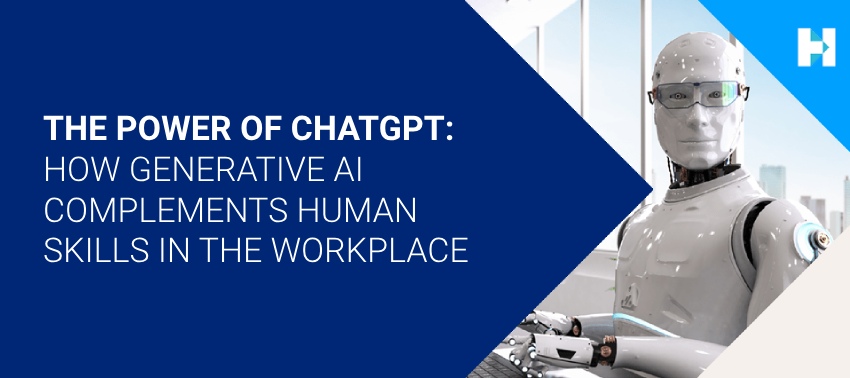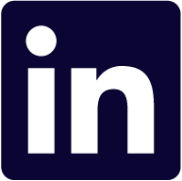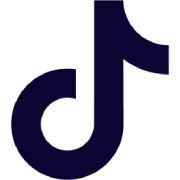The power of Chat GPT
It’s been a lot of fun watching ChatGPT answer our questions and write full bodies of text in a matter of seconds. So far at work I’ve seen the AI chatbot produce code for programmers and generate ideas for headlines, while people out there are enjoying themselves by using it to pen song lyrics and short stories.
However, its fame, success and efficiency have returned us to the age-old discussion of whether robots can replace humans in our jobs. After all, if it’s so easy and quick to use, what’s stopping your employer from turning to it?

There’s no denying that the advance in generative AI has, even in the space of a few months, transformed the way many of us will work. The recent release of GPT-4, with its improved capabilities in understanding the world, will only change things further. In response to this global poll we published on LinkedIn in January 2023, only 23% of 33,000 respondents are worried that ChatGPT could take their job, with one commenter stating: “ChatGPT’s goal is to assist and provide information to the best of its ability based on the data that this bot has been trained on. It is ultimately up to us (humans) to determine how we will use its capabilities.”
This does not, of course, mean that the other 77% of respondents are correct, and further polls that we run might show a change in sentiment, particularly now GPT-4 has arrived. We know that ChatGPT is not going away and, while it might not supersede you, it definitely has a role to play in the workplace. Let’s look at generative AI’s capabilities, limitations and how it can help you succeed in your career.
WHY WON'T CHATGPT REPLACE HUMANS IN ALL OF OUR JOBS?
Generative AI is certainly impressive, and can do a decent job of the things we ask of it. However, it has several limitations when it comes to human skills, meaning that it won’t be replacing everything we bring to the workplace. For example:
Lack of creative or strategic thinking: In a recent interview as part of Hays’ Tech Founders series, leading AI expert and ethicist, Sherin Mathew remarked: “ChatGPT is like the most eager, ambitious kid in the classroom, who’s probably looked at last year’s notes that the professor has issued and is trying to outsmart them. It will never be as smart as the professor, or be creative, or think about the next step.”
Missing common sense: As language and psychology expert Steven Pinker points out, the chatbot cannot jump to logical conclusions in the same way humans can, unless the solution has been explicitly (and specifically) provided elsewhere. This limits the impact it can have when managing tasks. However, the team behind GPT, OpenAI, claim that “GPT-4 surpasses ChatGPT in its advanced reasoning capabilities”, so this may become less of an issue for users.
Unable to check errors: In response to ChatGPT’s research capabilities, Google pushed ahead with the launch of its own AI-powered chatbot in February 2023. However, the unveiling was marred by the tool generating incorrect information, a mistake that wiped over $100bn from the company’s value.
Novelty factor over human touch: Remember how amazed you were when you first watched a 3D movie? Or used a touch-screen device? While we’re all excited by the novelty of what ChatGPT can do now, it’s likely that we’ll stop being so blown away by its capabilities soon enough. Pinker warns that people may even become suspicious or grow weary of AI-produced content, allowing humans to flex their muscles and show off what they can do in return. As one reply to our poll explained: “AI still has a long way to go when it comes to “human-like” text and interactions. Responses generated by ChatGPT still require a decent amount of human intervention and editing to help it escape the “uncanny valley” feeling that you get from AI-generated text.”
My colleague, Tim Olsen, sums it up in his recent article: “So, will AI be taking over our jobs? For now, it would appear not. There’s still a human element required to properly leverage and govern tools like ChatGPT, and the technology hasn’t yet reached maturity”. GPT-4 has only just come out, though, so let’s see what strides OpenAI have made, or whether some of the same problems still arise. How to use ChatGPT in your job What I can say is that ChatGPT and other generative AI have the capability to help you in your role, particularly when it comes to repetitive or “template” tasks. Our poll on LinkedIn from January 2023 revealed that 23% of the 14,000 respondents have used ChatGPT in a work capacity, while 30% would consider it. Given generative AI’s relative infancy, that’s a pretty high number, and more and more people are getting involved.
SO HOW CAN YOU USE CHATGPT IN YOUR JOB?
Copywriter
The chief use case for ChatGPT that has been grabbing attention has been its prose output. Users can request copy based on a certain subject, or telling a certain story, and can receive a pretty good body of text within seconds. You might ask it to write a statement, or perhaps content for a web page, particularly if the text will be unattributed. GPT-4 can even process over 25,000 words of text.
However, human input will be needed to review the content for factual errors and relevance. Although users can ask for the text to be written in a certain style, there are questions of consistency in tone of voice. Copywriters will also know that repeating the same words in quick succession is a no-no unless it’s done for effect – something ChatGPT won’t comprehend. In this sense, generative AI is just the pen, rather than the writer.
Marketing Executive
As Mathew discussed in our Tech Founders event, generative AI is not necessarily creative, but it can do an impression of somebody creative. If you need to write short blurbs or event descriptions that contain the key information, ChatGPT can help.
Lawyer
One legal firm in the UK has already implemented a chatbot based on the GPT technology to assist in drafting contracts. The company have stressed that this was not being introduced to replace humans, but rather to save them time, allowing them to focus on more important and sophisticated tasks.
With the right parameters and instructions, there’s no reason it couldn’t do the same when writing documents, especially in larger volumes. Just make sure to check them thoroughly!
Software Developer
Developers can use ChatGPT to write lines of code, with OpenAI reportedly enlisting programmers to improve its capabilities. While there may be fears among experienced programmers that this could lead to unskilled workers requesting code using simple commands, this approach simply won’t be as effective as a trained coding expert.
However, it has proved useful in fixing any bugs. Given its efficiency in identifying the source of any errors, ChatGPT could save time in solving problems.
Researcher
First, the pros of this: ChatGPT will offer information in arguably a more concise, digestible form than Google or other search engines do, as the way it uses language makes it easy to understand. It will also give you a direct answer to your query – no more sifting through irrelevant links to find what you need.
Now, the downside. I’ve already highlighted the potential errors in generative AI’s search results, and it won’t necessarily be able to provide a source for its information.
What to remember: using ChatGPT at work
We’re going to need to adapt to ChatGPT and other generative AI, learn to harness its capabilities and understand how it can complete many of our day-to-day tasks. Generative AI is always improving, so you’ll soon find that it will be of use.
It cannot, however, take over when it comes to the creativity, innovation and strategic thinking that we humans bring to an organisation. By playing to our strengths here, we can stay ahead of the curve and ensure that ChatGPT and other generative AI becomes a helpful tool, rather than our successor. While the conversation at the moment revolves around how generative AI will take jobs, we can also look at the positive aspect of the jobs it will create. In my next blog, I’ll be looking at the ways in which jobs will evolve, disappear and appear as ChatGPT and other models become a mainstay in the world of work.




